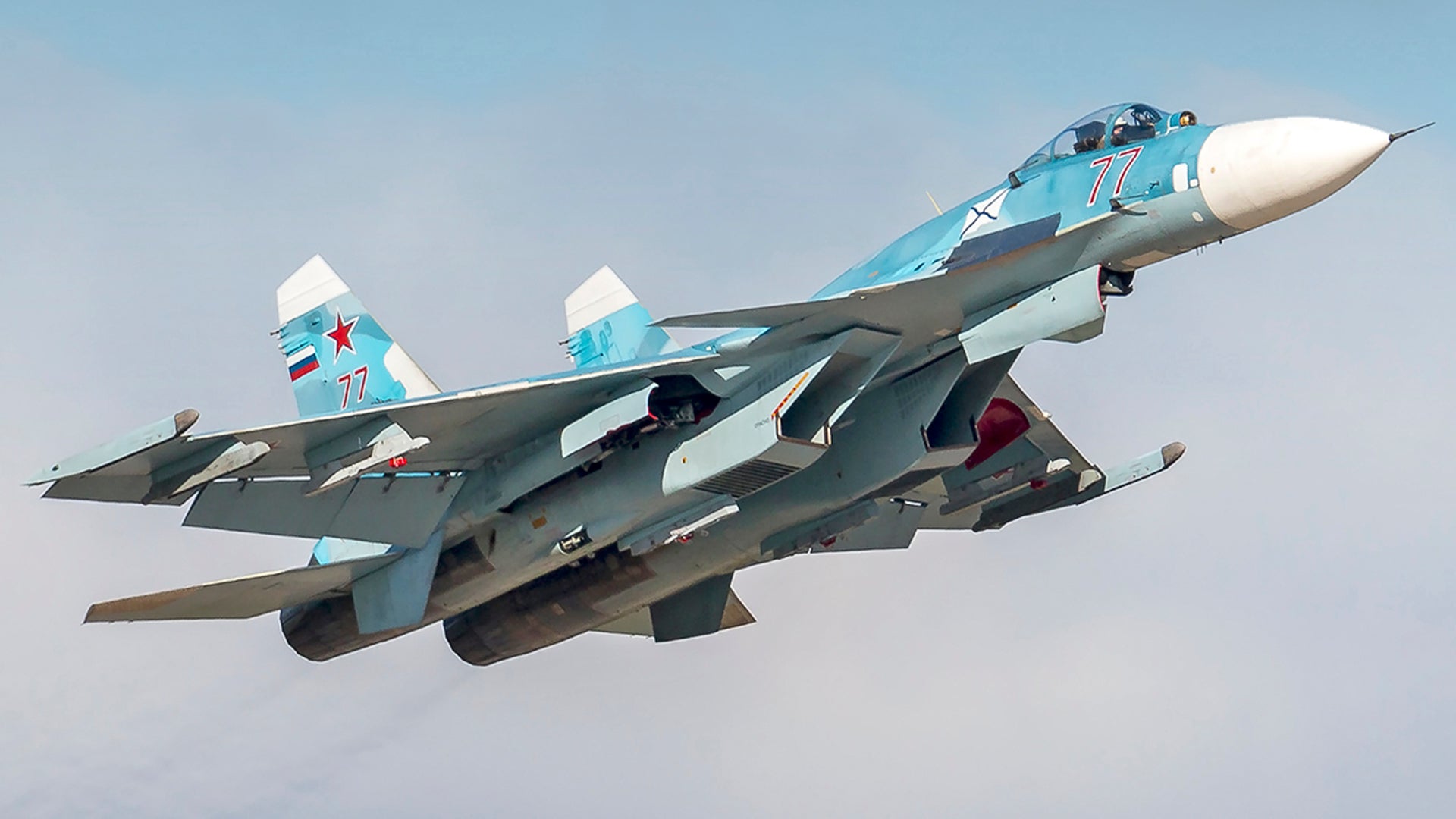Russian media reports, and the Kremlin has confirmed, that an Su-33 had crashed in the Eastern Mediterranean while attempting to land on the Admiral Kuznetsov. The loss comes just days after a MiG-29KR assigned to the carrier’s air wing was lost while waiting to recover on the carrier. The ship’s arresting gear appears to have been at the center of both losses.
The most recent crash was the result of one of the carrier’s cross-deck pendants—also known as a wire—snapping right after an Su-33’s tailhook caught it upon touchdown. With the wire partially slowing the aircraft before snapping, the Su-33 did not have enough energy to bolter, and return to the air. Deprived of airspeed, the jet plummeted into the sea. Thankfully the pilot was able to eject and was subsequently picked up alive by one of the ship’s helicopters.
A video shows a similar loss of an Su-33 in 2005:

In the case of the other loss days earlier, a wire snapped during a MiG-29KR’s landing. Though the jet was not lost, as its hook caught the next wire, It did cause another MiG-29KR still in the air to have to wait for the deck to be reset and cleared. Strangely the aircraft was not diverted to a nearby land base due to its low fuel state, and both the MiG’s engines flamed-out do to fuel starvation. The jet plummeted into the ocean although the pilot ejected safely.
It has been noted that the Kuznetsov’s fighters have primarily been operating from Russia’s air base in Syria, not from the carrier as of late. It is not perfectly clear if the move to the land base happened before or after the loss of the second aircraft, though imagery of the base dated November 20th shows no less than eight Su-33s parked on the ramp there. Most reports put the Kuznetsov air wing’s fighter contingent at 10 Su-33s—eight of which are slightly upgraded—and four to five new MiG-29KRs. At least, that’s what was embarked on the ship when it left Severomorsk last October.

Combat Aircraft says the aircraft that was lost was number Red 88, one of the Su-33s that have recently received the upgrades. The War Zone stated in early October:
“Russia has executed a light upgrade of a portion of the tiny Su-33 fleet, which includes some modernized avionics and possibly the addition of the SVP-24 system, which helps improve accuracy of dumb bombs–the vast majority of air-to-ground weapons used on Syrian targets by Russian aircraft. While it’s an improvement on previous targeting systems, this new-found accuracy is not even remotely comparable to any modern guided air-to-ground munitions. These Su-33s also appear to have been overhauled mechanically and feature new paint.”
A digital kneepad has also been seen worn by some Su-33 pilots which is part of the Su-33’s recent set of enhancements. This type of system is a less expensive and more adaptable alternative to outfitting the cockpit with up-to-date high-resolution multi-function displays and mission computers. The French executed a similar upgrade with their aging Super Étendards years before retiring the venerable jet last Summer.

There have been some reports stating that the carrier is slated to return to Russia on February 9th to go through a complex overhaul. Regardless of when the well-worn ship actually returns to Severomorsk, it will be interesting to see what changes, if any, Russia makes to its carrier aviation program—especially considering that its air wing will likely be on hiatus from shipboard operations for a very long time.
Contact the author Tyler@thedrive.com
